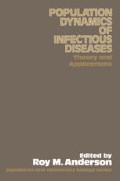Abstract
The real world is infinitely complex. So in dealing with reality the epidemiologist must simplify. In planning a malaria control programme he will ignore the details of which days Ahmed Babu had a fever and what killed the first mosquito to emerge from a specific pool on November 10th. To that extent we all must operate with models, and as will be apparent to the reader of Albert Camus’ ‘La Peste’ the public health worker’s model of a plague epidemic will differ from the priest’s model, or that of the mayor of the town where the epidemic occurs. Thus we all work with models in order to cope with complex reality, but we usually do so unconsciously. The question to be addressed is therefore ‘how far is it useful for such models to be explicit and, in particular, how important is it that they should be quantitative and mathematical?’ Furthermore, do such mathematical models have decisive advantages at present over less precise intuitive and qualitative approaches in the understanding and control of infective disease? Any satisfactory answer must consider this in relation to research, teaching and operational public health work and in relation to the various diseases for which models have been proposed.
Access this chapter
Tax calculation will be finalised at checkout
Purchases are for personal use only
Preview
Unable to display preview. Download preview PDF.
Editor information
Editors and Affiliations
Rights and permissions
Copyright information
© 1982 Springer Science+Business Media Dordrecht
About this chapter
Cite this chapter
Bradley, D.J. (1982). Epidemiological models — theory and reality. In: Anderson, R.M. (eds) The Population Dynamics of Infectious Diseases: Theory and Applications. Population and Community Biology. Springer, Boston, MA. https://doi.org/10.1007/978-1-4899-2901-3_10
Download citation
DOI: https://doi.org/10.1007/978-1-4899-2901-3_10
Publisher Name: Springer, Boston, MA
Print ISBN: 978-0-412-21610-7
Online ISBN: 978-1-4899-2901-3
eBook Packages: Springer Book Archive

